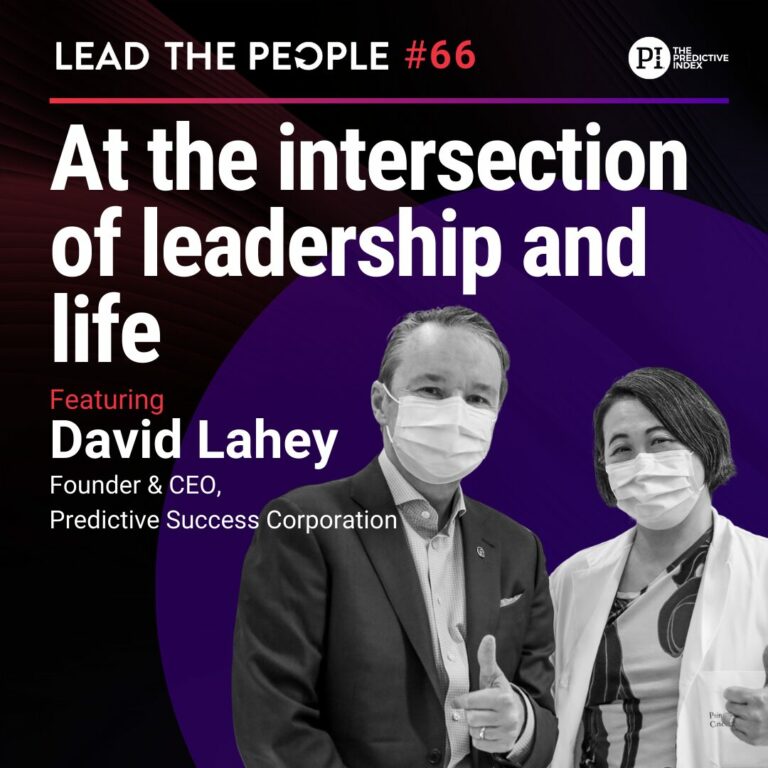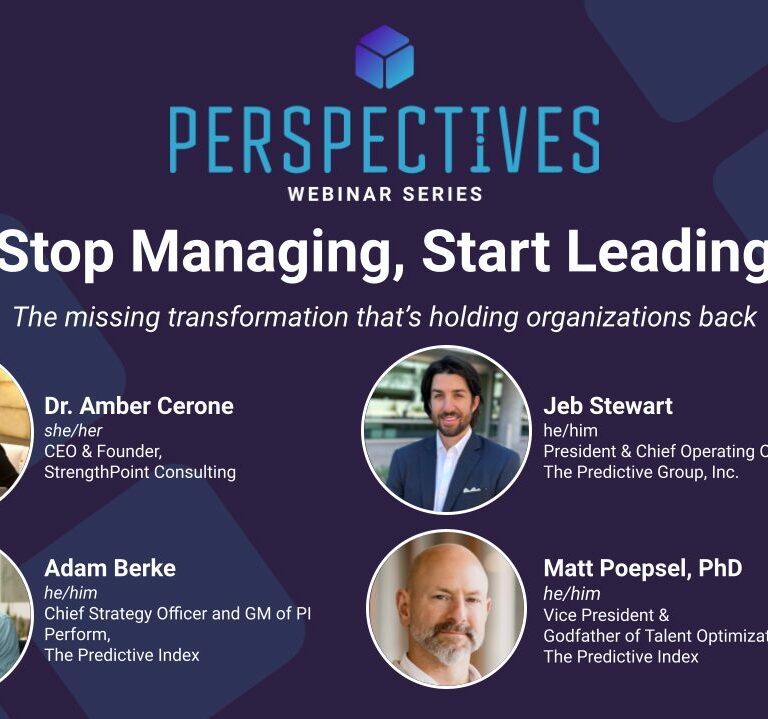
Leadership Mount Rushmore
Who belongs on the leadership equivalent of Mount Rushmore?Because leadership is a highly individualized practice, there’s no wrong answer. The most important answer is your own.

Who belongs on the leadership equivalent of Mount Rushmore?Because leadership is a highly individualized practice, there’s no wrong answer. The most important answer is your own.

Transparency has become a hot topic for employers and employees alike. For this month’s episode of the Perspectives webinar series powered by The Predictive Index, we decided to set our sights on the transparency topic.

If you work in tech, or your office has adopted a remote or hybrid way of working, there’s a good chance you’ve used Slack before and understand the benefits as well as the pitfalls, such as Slack holes and ‘always-on’ communication.

In project management circles, a RACI chart offers help. This acronym stands for Responsible, Accountable, Informed, and Consulted. These are the roles assigned to a given individual or group (in the case of C and I) for each required deliverable or activity.

Think about the trajectory of our professional development. We’re often so caught up in today’s pressing demands that we lose a bit of perspective. My “memory lane” experience was fresh in my mind during a recent mentorship conversation.

Tune into the Lead The People podcast for a heart wrenching cancer survival story, and learn about its profound impact on one oncologist’s communication at work.

We launched PI Perform in February, and we’re thrilled with the reception so far. Here’s how Perform is helping us achieve Better Work.

Modern work is complex, and tension can run high within organizations. Identifying opposing forces brings us closer to helping ourselves navigate these situations effectively.

Leadership is complex. Rather than complain about what’s not working, we wanted to turn our attention to how we can help leaders at every level get it right.

Recognition makes employees feel a heightened sense of belonging and value. It costs almost nothing, but it can be priceless in terms of the morale and motivation it can produce. And it isn’t reserved for manager-to-direct reporting relationships.

In our work, we experience a variety of conditions that can produce a range of outcomes. This can happen when our activity level, focus, stimulation, or other factors are too much, too little, or just right.

With the rise of remote and hybrid workplaces, along with the growing share of employees demanding deeper connections, greater recognition, and a sense of shared purpose from their job than ever before, more organizations are realizing the value and importance of the simple one-on-one.

I’ve been leading people in organizations large and small for some 30 years. Not once has anybody inspected my leadership abilities using a formalized checklist. What would such a checklist even measure?

For some, the term ‘love’ has no place at work. For others, it’s why they show up to work at all. I invited a diverse group of experts to join me on the latest installment of the Perspectives webinar series to discuss.

Tips, strategies, and workplace examples of effective team goal-setting Setting effective team goals sounds simple enough. After all, we set goals for ourselves every day. Whether you’re writing down a to-do list or trying to accomplish something a little more long-term, setting a goal just means stating what you want to get done. So why…

How do you build a high-performing team? Even the clearest business vision is lost without the right people in place. You certainly can’t build a high-performing team just by hiring a few people with glowing resumes. This holds true whether yours is an organization of five or 5,000, multinational or local. You can’t achieve your…

Join us as we reflect on a month of Black History At The Predictive Index, we believe equity goes hand in hand with empathy and education. The more we listen to and learn from our friends, colleagues, and neighbors, the better our world becomes. Where there are lived experiences, there is learning. When you speak…

Attracting top talent in 2023 There’s no denying it: The employer-employee dynamic has flipped—maybe for good. If you’re a hiring manager or business leader, you’ve probably seen it firsthand. Good candidates for key roles are scarce. They left jobs during The Great Resignation in no hurry to return, or they’re taking advantage of sudden supply-and-demand…

Your guide to a hiring strategy that actually works When you look over candidates for a key open position, do you feel a sense of dread? When you find the perfect candidate, do you always seem to lose them? Or, when you finally hire someone, has their performance been underwhelming? It’s a common quandary in…

What does it mean to have psychological safety in the workplace? What does the term “safety in the workplace” mean to you? At first, it might evoke images of Wet Floor placards, or Caution: Hot Coffee labels. Maybe you get stressed out thinking about OSHA regulations. Not inconsequential stuff, but these more traditional markers only…